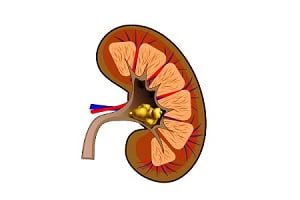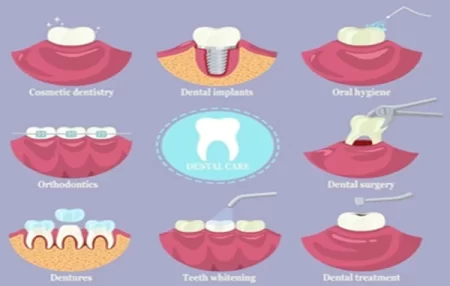Dental Crown
A dental crown is a tooth-shaped cap that is placed over your damaged tooth. It helps in restoring the original shape, size, strength, and appearance of your tooth. The tooth crown covers the entire visible portion of the tooth, including the tooth region below the gum line and tooth region above the gum line.
Partial Crown
Partial crowns cover only certain cusps of a tooth. They are also known as onlays or ¾ crowns. Such restorations are chosen as a conservative measure to preserve the maximum remaining tooth structure. These partial crowns are preferred for a specific type of crown restorations. Onlays are the most common variation for the technique of dental crowns.
Partial crowns are different from traditional dental crowns, as the partial crown covers a tooth’s specific region. In contrast, a traditional crown can cover the entire noticeable area of your tooth.
Post Crown
A root-filled tooth must insert a post into the teeth before placing a dental crown over it. A post provides support and helps the crown to stay in its place. During the preparation of a post crown, the surface of a tooth may be reduced until its gum level.
A post crown can be prepared from stainless steel and can be easily fitted into the root canal. In some cases, the technician may prepare a custom-made post that can accurately fit the prepared root canal’s shape. The post is placed in the root canal with cement, which is ready for the tooth crown placement.
If your root-filled tooth is not completely broken, your dentist may build up your teeth using filling material. Your tooth’s core is prepared similarly as it occurs during attachment of a typical dental crown. In such situations, a post crown may not be required for the treatment of the damaged tooth.
Read About Teeth Bonding or Dental Bonding
When Do You Need a Dental Crown?
There are numerous situations that necessitate tooth restoration with dental crowns from Rocky Mountain House. Some common dental issues which need dental crown replacement are as follows:
Large Filling
If your tooth has a cavity or fracture with a size of about half or more width of your tooth, it can be covered with a crown. It is very important to cover the remaining tooth around the large filling, as it can lead to a fracture in your tooth.
If you had a large filling in your tooth for quite a long period, it should be replaced with a dental crown. The filling indicates signs of stress and cracks around the filling.
Root Canal
A root canal treatment leads to the development of a hollow tooth, which further causes cracking in the tooth.
Whenever a dentist carries out a root canal surgery, he/she may recommend the replacement of the tooth with a crown on an immediate basis. This can prevent the tooth from fracturing.
Cracked Tooth Syndrome
Cracked tooth syndrome is a condition in which the tooth is fractured and causes pain while chewing food. While chewing, stress occurs on the fracture lines, and you may feel like your tooth is splitting apart.
Placing a crown over the fractured tooth will help distribute the stress evenly throughout the tooth and hold it together. It will help in reducing tooth pain. In such a situation, a temporary crown is placed over the affected teeth for a short duration to eliminate the pain, which further does not require any root canal treatment.
Broken Cusps
Cusps are the raised or pointy regions of a tooth, which helps in chewing and tearing food particles. They usually broke off the teeth due to trauma or a large existing filling. Cusps are the most stressed region of the tooth while we chew food. They should be covered; otherwise, the filling may crack or fracture soon.
In some cases, the tooth breaks till the bone and may require a crown lengthening procedure. It involves the trimming of the bone and gums below the edge of the fractured region of your tooth. Trimming of the broken region allows placement of your crown’s margin on a healthy, strong tooth structure.
Excessive Wear of Teeth
If you have a habit of grinding your teeth continuously, it may slowly lead to your teeth’ shortening. The teeth can also wear off due to acid erosion caused by gastrointestinal acid reflux (GERD), bulimia, or consumption of an acidic diet.
In some cases, the enamel may wear off completely, leaving behind a small, soft tooth. With time, the bite may even collapse completely. The only method left by which your teeth can be restored to its normal size will be covering it using a dental crown.
Read About Tooth Crown Procedure: Overview and Precautions
Undesirable Appearance of Teeth
Teeth with an unacceptable appearance due to variation in its shape, color, or spaces between the teeth can be restructured using tooth crowns. Dental veneers are the most effective and conservative method of enhancing the look of your front teeth. They can be made to look natural, and they may not require any preparation or shaving of your existing teeth.
With the help of cosmetic modification, some people attach a tooth crown on their teeth to beautify their teeth’ smile or appearance.
Other Dental Problems
Crowns are placed on dental implants to fill the spaces which are left by the missing teeth. The spaces left by the missing teeth can also be filled using dental bridges. Dental bridges are made from crowns on the next teeth to the spaces attached to fake teeth in the middle.
If the teeth are loose, crowns are placed on multiple teeth and splinted together to provide better support and stability to the affected tooth. A dental crown also holds a dental bridge in its original place.
For children, the tooth crown is primarily used for baby teeth due to the following reasons:
- To save a tooth which has been badly damaged due to tooth decay and cannot be supported using a dental filling
- Protect the baby tooth, which has a high risk of tooth decay.
- Those teeth which create problem in maintaining daily oral hygiene are also protected using a tooth crown.
A pediatric dentist may recommend stainless steel crowns for the protection of your child’s teeth.
Children are provided with a low dose of general anesthesia due to their age, behavior, and medical history. Anesthesia reduces the pain during tooth crown procedure and provides your child’s full cooperation for proper dental care.
How Does It Feel After Attachment of a Dental Crown?
Once your affected tooth has crowed, the shape of the original tooth is slightly changed due to capping of the tooth. You may feel changes in the shape and structure of your tooth for about a few days. Once the surrounding tooth gets adjusted with your dental crown, you may not feel any difference, and the tooth may not even be noticeable.
If you face any problem with your bite, then you should visit your dentist on an urgent basis. He/she may adjust your tooth crown to reduce your symptoms.






